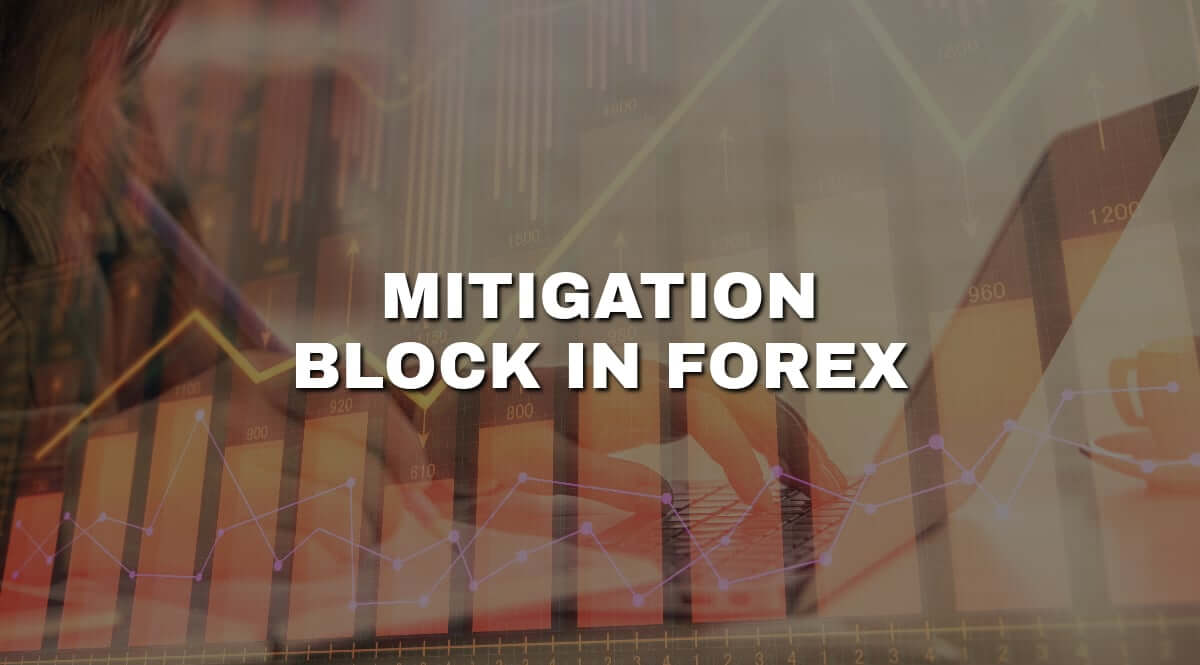Mitigation Block in Forex – How to Trade Mitigation Block?
Mitigation blocks, commonly known as hedging, are a risk management tool used in the Forex market. It is a strategy that involves opening another position in order to balance the risk of an existing position.
Forex traders constantly face the unpredictability of market factors, including currency rate variations, geopolitical factors, and economic events. The above-mentioned risk factors, if not managed wisely, can result in significant financial losses.
Enter mitigation blocks – a method designed to curtail these potential losses and safeguard accrued profits. A mitigation block works by opening a position in the opposite direction of an existing trade.
For example, if a trader has a long position on a currency pair, they can open a short position on the same pair as a protective measure.
Should the market’s tide turn against the initial long position, the gains from the short stance can act as a buffer, mitigating the overall loss.
Typically, those with a rich tapestry of trading experience and an appetite for higher risk employ this nuanced strategy. It demands not only an intimate knowledge of market dynamics but also a mastery of risk management protocols.
Several advantages of mitigation blocks:
Longevity in the market: Instead of hastily exiting a losing trade, traders can deploy a mitigation block. This tactic allows them to remain in the market, awaiting possible favorable shifts.
Capitalizing on market volatility: Another benefit of mitigation blocks is that they can help traders take advantage of market volatility.
When the market is highly volatile, it can be demanding to predict the direction of the price. Nonetheless, by opening a mitigation block, traders can profit from both upward as well as downward movements.
Executing mitigation blocks can take several forms. One prevalent method involves utilizing derivatives like options and futures. Such tools empower traders to establish a market stance without possessing the actual foundational asset.
Another tactic is leveraging correlated currency pairs. Some currency pairs exhibit parallel movement tendencies. For instance, pairs like EUR/USD and GBP/USD are renowned for their high correlation. For example, a trader with a long position in EUR/USD can counterbalance the risk by opening a short position in GBP/USD.
As in the case of all strategies, mitigation blocks come with their set of challenges:
Financial implications: Establishing an extra position demands more capital, which could hike up the trading expenses.
Profit curtailment: If market movement aligns with the trader’s primary position, the gains from the mitigation block might counterbalance the profits from the initial trade, leading to diminished overall returns.
Forex market and its role
Let’s take a short break from a mitigation block. It is hard to overestimate the importance of the foreign exchange market.
The foreign exchange (Forex) market is of immense importance in the global financial landscape, serving as the backbone of international trade, investment, and finance. It plays a pivotal role in facilitating the exchange of currencies, which is vital for businesses, governments, and individuals around the world. Here are some key reasons highlighting the significance of the Forex market:
Facilitates international trade: The Forex market enables the smooth flow of goods and services across borders by providing a mechanism for converting one currency into another. Businesses engaged in international trade rely on Forex to hedge against currency fluctuations, ensuring stable pricing and reducing risk.
The most liquid financial market
Liquidity: The Forex market is the most liquid financial market in the world. High liquidity ensures traders can buy or sell currencies quickly and at competitive prices, minimizing transaction costs.
Hedging: Companies and investors use Forex markets to hedge against currency risk. For example, a multinational corporation can use forward contracts or options to protect against adverse currency movements, preserving profit margins.
Investment opportunities: Forex provides a myriad of investment opportunities, allowing traders to speculate on currency movements for profit. It is accessible 24 hours a day, five days a week, making it a flexible market for traders across different time zones.
Central banks’ policies: Central banks play a pivotal role in the Forex market. Their monetary policies, such as interest rate decisions and quantitative easing measures, impact currency values. Traders closely monitor these policies for trading opportunities and to anticipate future market movements.
Risk management: Financial institutions, corporations, and investors use the Forex market for risk management purposes. By trading in currencies, they can offset risks associated with other asset classes like stocks, bonds, and commodities.
Global interconnectedness: In today’s interconnected world, events in one part of the globe can have far-reaching effects on financial markets. The Forex market’s global nature means it is highly responsive to geopolitical events and news, making it a critical barometer of global sentiment.
To sum up, mitigation blocks serve as a defensive shield, protecting traders from potential losses and ensuring profit preservation. Although it offers many benefits, its effective deployment requires an in-depth grasp of market mechanics and astute risk management. Before venturing into this strategy, traders must weigh its pros and cons meticulously.
The post Mitigation block in forex – how to trade mitigation block? appeared first on FinanceBrokerage.

































